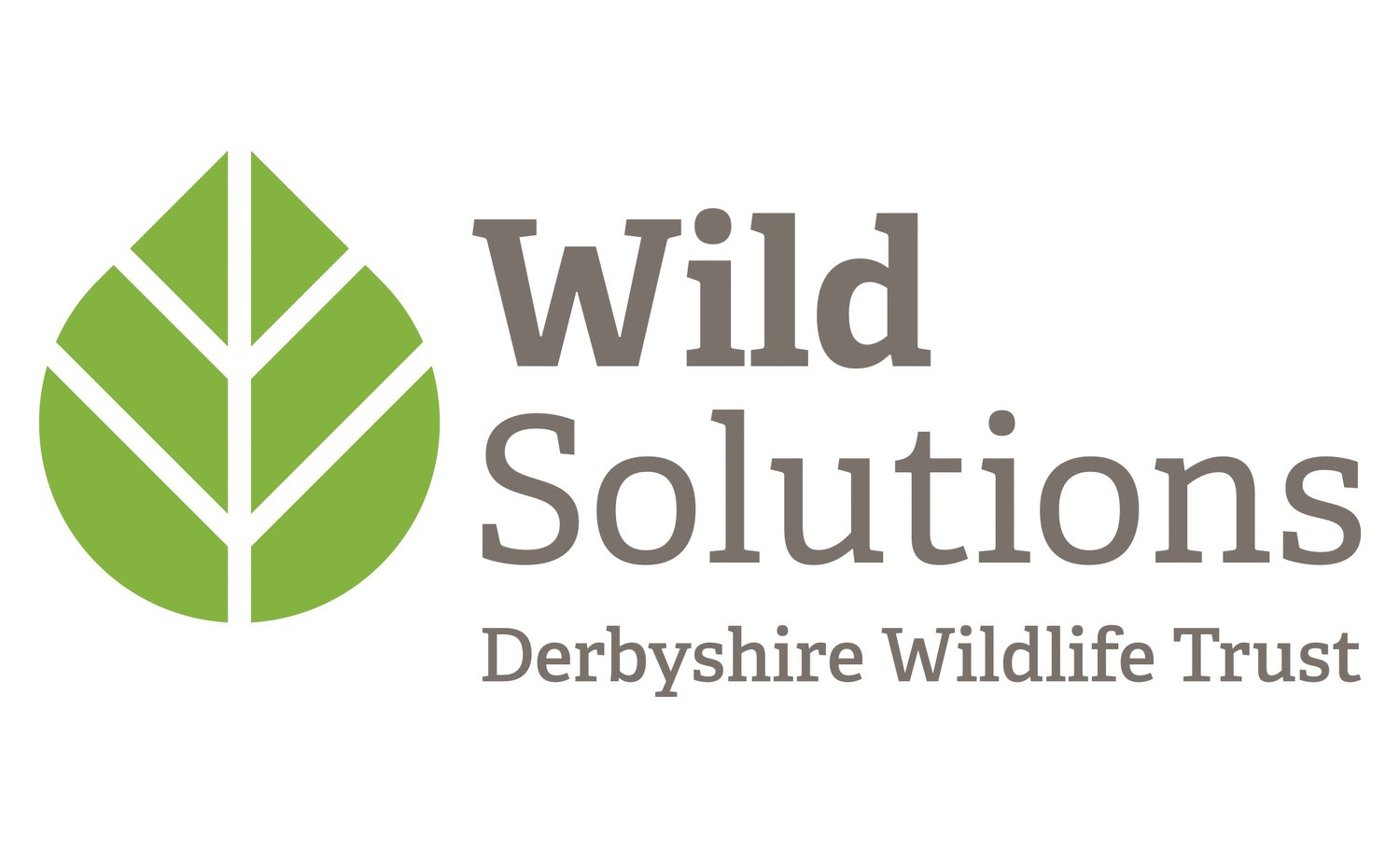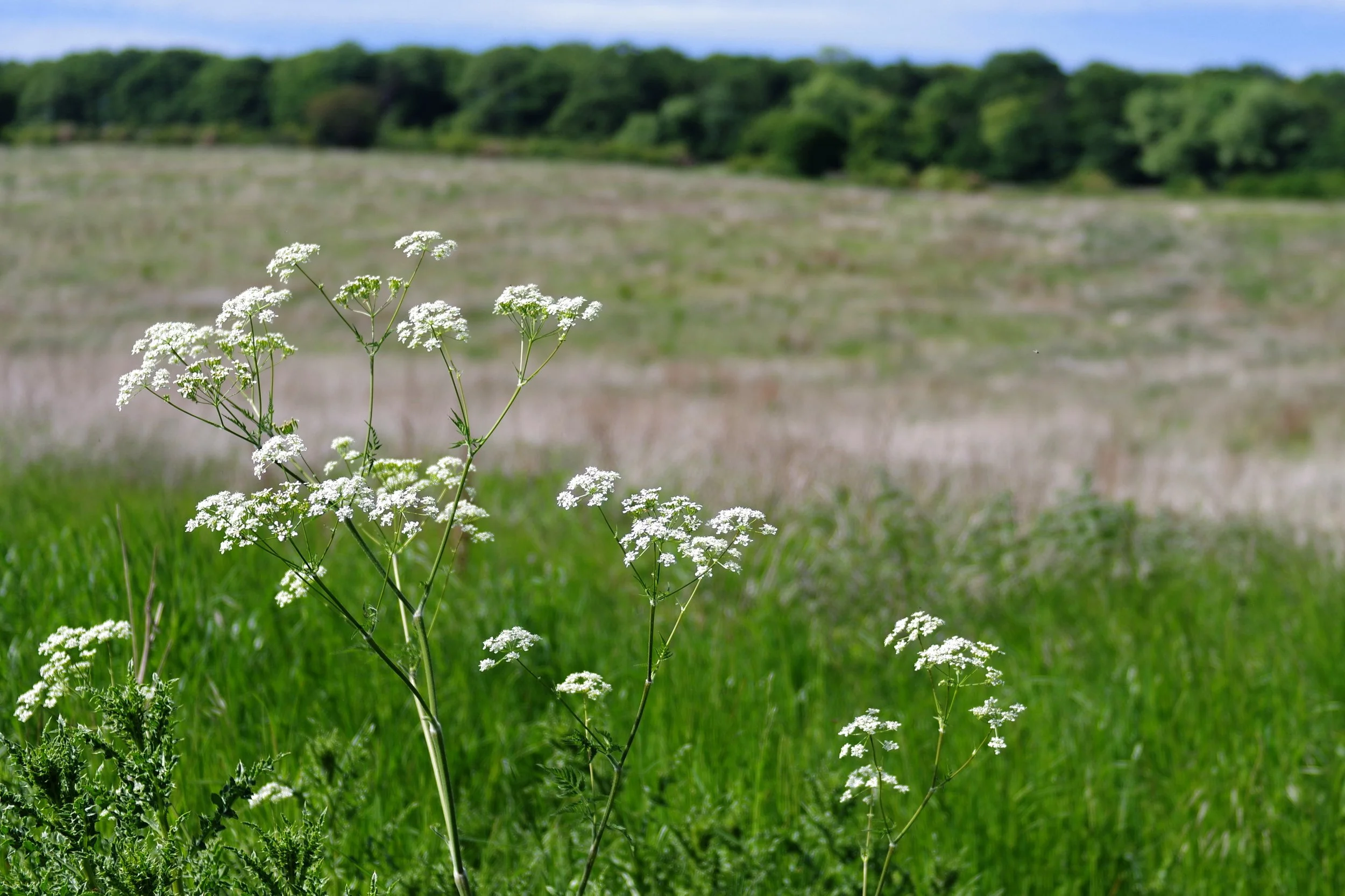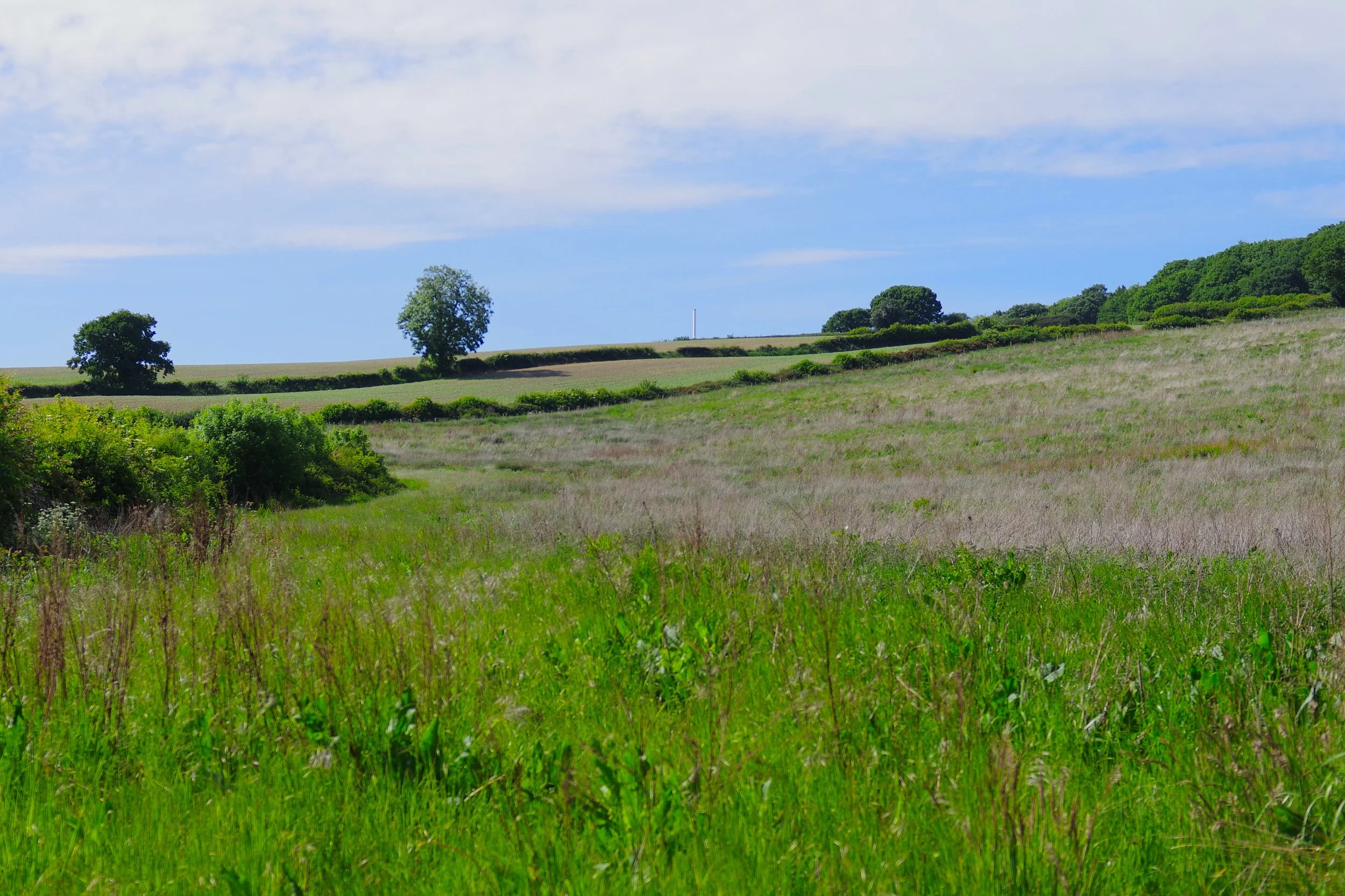Nature Recovering in Wild Whittington
By Hollie Fisher MCIEEM – Nature Recovery Advice Manager
and Georgie East – Marketing Apprentice
We’re just two years into our work at Wild Whittington and already signs of nature’s recovery are appearing—willow scrub is sprouting, skylarks are singing, and blackthorn is in bloom. But it was a special moment this May, when our Wild Solutions Ecology team and Communications team stumbled across something unexpected, that truly showed us nature is on the comeback.
Wild Whittington
What is Wild Whittington?
Wild Whittington is a flagship example of nature recovery through investment — showing how funding from new developments can help create thriving wild spaces. Instead of leaving nature worse off, this approach makes sure that whenever land is developed, new habitats are created or improved elsewhere to give wildlife a helping hand. This process is called Biodiversity Net Gain (BNG). At Wild Whittington, Derbyshire Wildlife Trust is leading the way in showing how this can work in practice, creating high-quality habitats that will benefit wildlife and local communities for the long term.
You can learn more about the vision for Wild Whittington and how Biodiversity Net Gain works in these blogs:
Wild Whittington Letting Nature Take the Lead
Wild Solutions - Gold Standard of BNG
By taking a nature first approach, embedding extensive monitoring and adaptive management into the project, we can ensure that we are working towards a rich and diverse site. Just one year on, we are already seeing some exciting changes with the once arable fields now bursting into life. We have seen an explosion of willow scrub to the south of the site and a steady transition of the fields into grassland with floristic diversity slowly creeping in. This change in habitat has also seen a response in fauna, with our ecologists seeing a rise in bird species, pollinators, bats and mammals.
Wild Whittington
The return of the grass snake
When we first acquired the site in 2023, our ecology team found no signs of grass snakes during the baseline surveys, despite historical records and local accounts suggesting they were once present. After an early morning bird survey during that first year, we bumped into a resident who told us that they regularly used to see grass snake on this site, but not anymore. The conversation stuck with us, we felt like when we saw the grass snakes return, it would be a sure sign that nature was bouncing back.
Imagine our excitement this spring, when multiple sightings of grass snake were confirmed during our 2025 reptile surveys! The return of this iconic species is not just exciting because of the historical records, but these beautiful, non-venomous reptiles are fantastic indicators of habitat quality. They rely on a mosaic of habitats including wetland edges, scrub and grassland for foraging, basking and breeding. Their early return shows that our approach is already working, with Wild Whittington already becoming the connected, healthy ecosystem we are striving for. To mark the moment, Georgie from our Comms team joined our ecologists on the final reptile survey of the season, hoping to capture this shy and elusive species on camera.
Georgie East, Marketing Apprentice said:
“The grass snake was under one of the last reptile mats we checked. I was ready with my camera – or so I thought. As soon as Dan (Nature Recovery Assistant) lifted the mat, there the grass snake was, curled up and beautiful. I got so excited, I fumbled with my camera, trying to capture the snake in this amazing moment, however in my overexcitement, I didn’t manage to take the picture in time. But wow - what an amazing experience. I’d never seen a wild snake before and it was incredible to see. Snakes had felt more like a myth or legend in this country, so seeing the real thing right in front of me was so humbling. Finding something so precious in a place everyone has worked so hard to restore, filled me with hope for the future of Derbyshire’s wildlife. This was living proof of the positive change Derbyshire Wildlife Trust and its supporters and volunteers have had and I’m so grateful to have been a part of it. Luckily someone with faster reflexes managed to capture a photo.”
Grass Snake, Wild Whittington
(C) Dan Marshall
What Else is Happening?
Grass snake are not the only positive changes we have seen on site recently, with the team recording bats, mammals, birds, and pollinators across our field surveys – several of which posed for their photo to be taken in the camera traps we often have out.
Due to the site’s history as arable fields, simply taking it out of rotation has allowed changes to occur naturally, seeing a return in wildlife. Using our ecological expertise, we are using our extensive monitoring to ensure that we are delivering the right management, taking an adaptive and nature led approach to conservation. These changes are just the beginning - we’re currently allowing the site to regenerate naturally, monitoring closely to guide future actions. Soon, we’ll introduce grazing animals to help shape a more dynamic and diverse habitat mosaic.
Spaces like Wild Whittington are vital, not just for wildlife but for people too. Why not get out and visit the site to witness this change firsthand, join us in this rare opportunity to see a nature reserve in its ‘before’ stage, and follow its journey as we transform it into something wild. You might spot a buzzard overhead, a skylark in full song – or if you are lucky, the elusive grass snake... or an even more elusive ecologist trying to find one!



